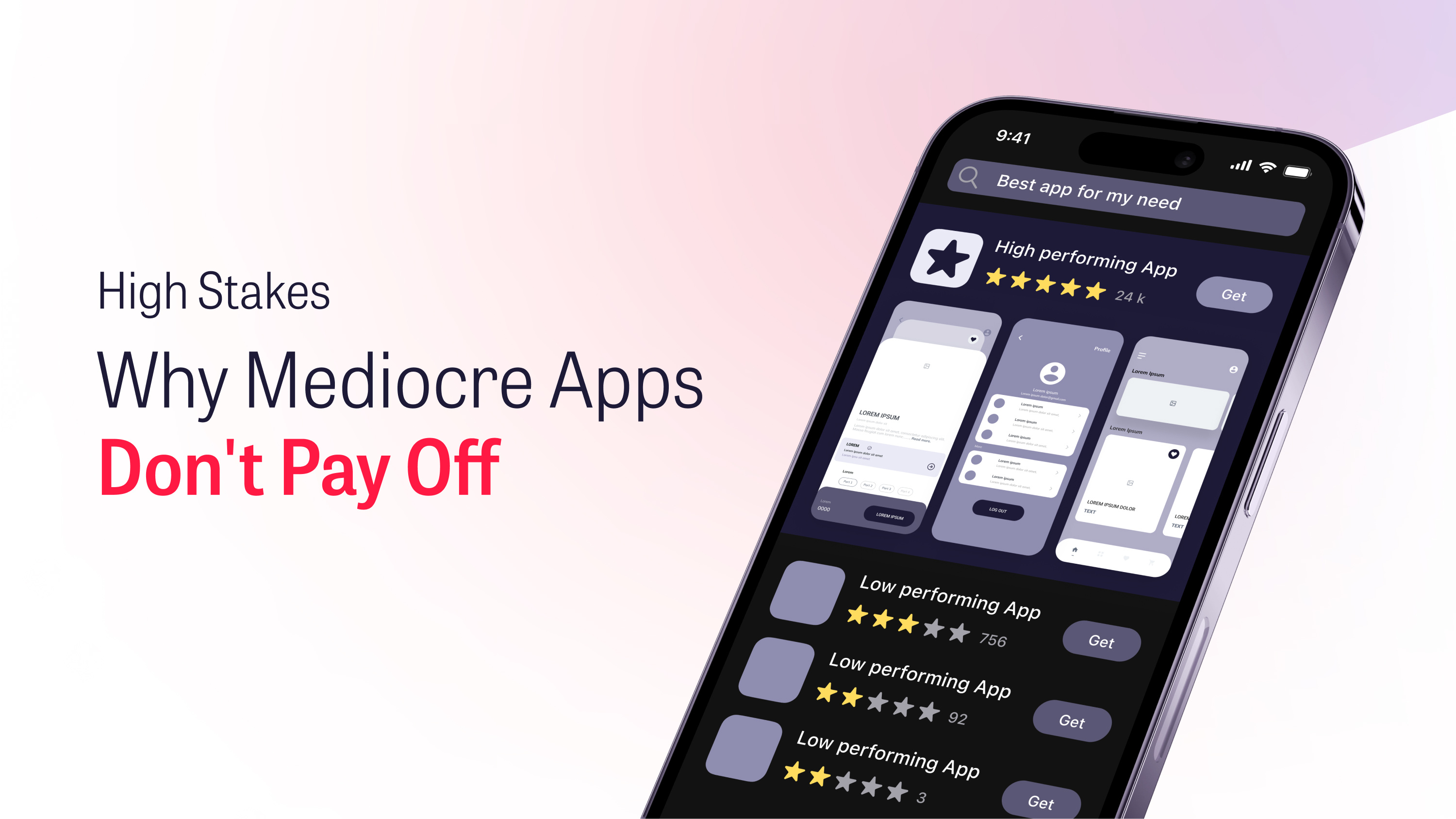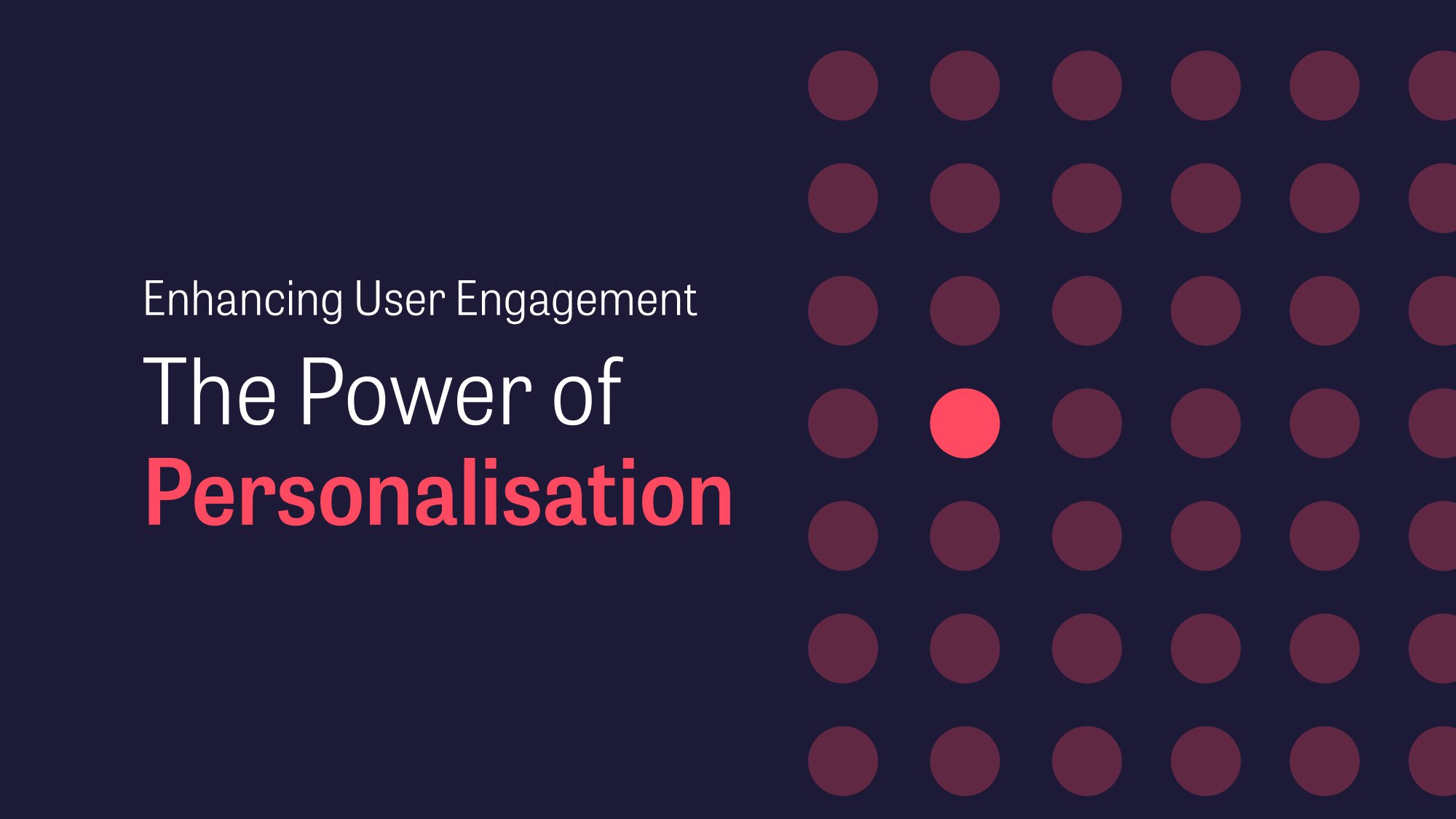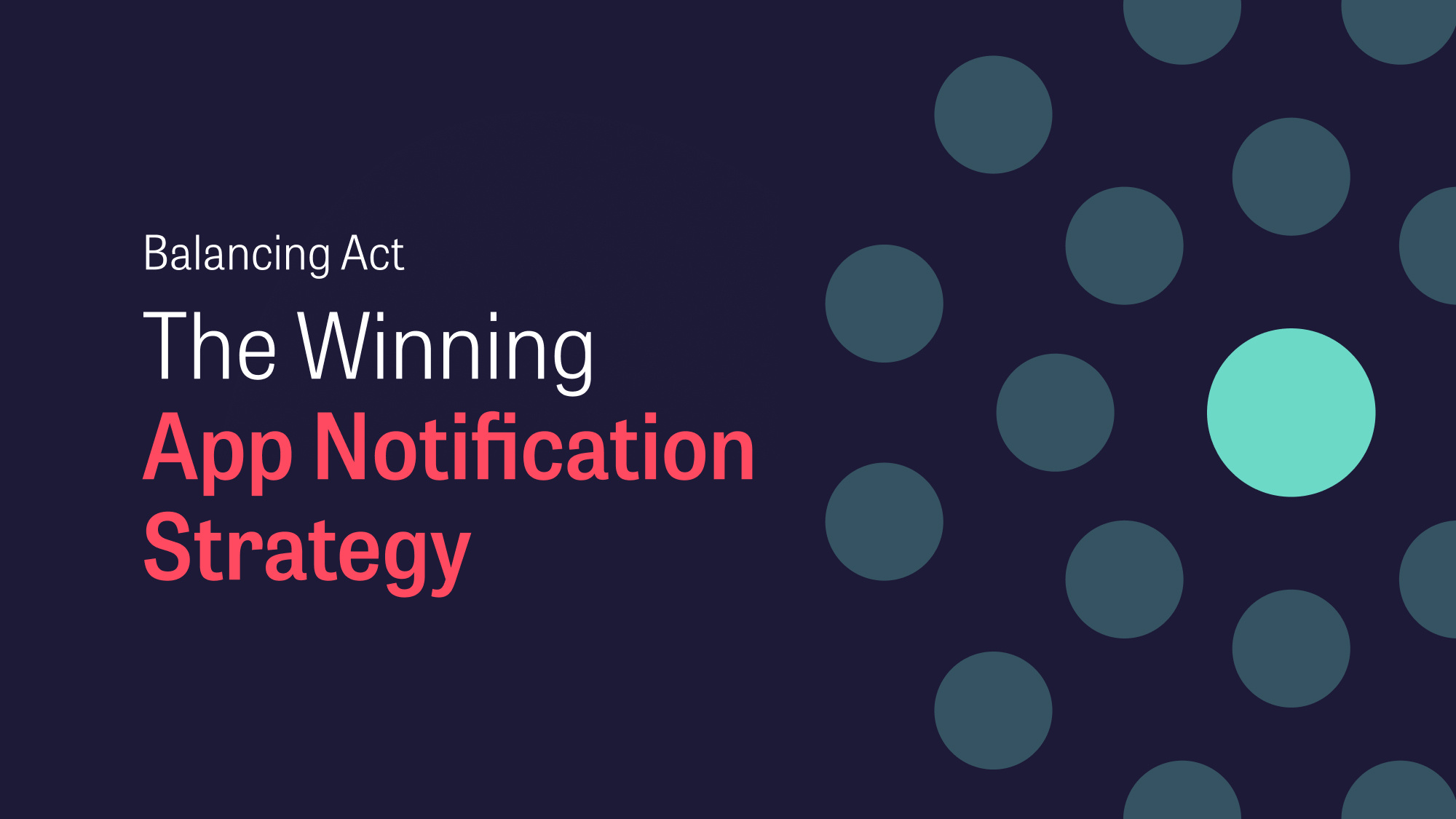
When it comes to boosting app usage and revenue, we often resort to the short-term toolbox of aggressive marketing, price reductions, or increasing the frequency of app notifications. These approaches might help us meet our short-term goals and next month's budget. In the end, all such tactics do, however, prey on long-term customer loyalty. Annoying the customers or raising the expectations of the next big sale has become the norm in many industries, but this kind of thinking will not make you a long-term winner.
What will then? Shy away from shortsighted tactics and focus entirely on leadership through sustainable growth. The foundation is keeping both new and existing users engaged in your app over extended periods of time. Taking an ambitious and systematic approach to retention improvements requires long-term thinking at the cost of short-term fixes, which can seem daunting and complex.
Continue reading, and you’ll get a simple tactical approach that will help you get started on an accelerated journey to best-in-class user retention.
Mastering Retention: Three Fundamental Elements to Prioritise
Apart from a few very competitive industries, the role of the app leader is often very much up for grabs. In most, if not all, apps we examine at Shape, we see significant unrealised potential for user retention growth such as;
- overly complex registration processes
- hiding important features
- poor content design
- badly timed notifications
- lack of access to help.
To accelerate your journey, I propose giving three fundamental elements of the decision- and development process some attention:
- Focus and organise your retention initiatives along the user journey
- Design and plan initiatives from simple and focused insights
- Invest enough and keep a high cadence
These will be explained further below.
How to get started: Dive into Retention Enhancement with Shape
We are confident that a fundamental perspective focusing on users, simple decision tools, and enough development resources will drive growth in your app user retention.
For companies committed to developing a competitive app, Shape provides a complimentary consultation with a focus on enhancing your app's user retention. Here we will examine your app and provide a list of items we believe can improve its retention rate.
Interested?
The Retention Timeline: From First Click to Loyal User
The retention clock starts ticking the moment a user opens your app the first time, and each subsequent interaction they have with the app confirms their continued loyalty to your app-based offering – they are still here.
Basic analytics tools like Firebase, Mixpanel, and Adobe Analytics all have retention reports and often report retention for the first day, for 7 days, 30-, and 90-day periods.
Starting out, the periodic reports can be used to compare your app's retention with public industry retention data. Industry data can provide a simple, first sanity check. Your app might perform better or worse than that of the industry benchmarks. However, due to subtle differences in the nature of your unique offerings, public data is most often too generic to compare with your distinct app.
To drive an effective retention strategy for your app, I recommend shifting your focus away from periodic retention data and instead examining how your customer relationship deepens with each step in your own app's user journey. Each step represents a user's vote on your app: This is good and I want more vs. I didn’t get what I needed. A deep understanding of these choices will help you isolate where and why the user churns.
I recommend that you start by focusing 100% on the onboarding churn. This is the first moment of truth and where the biggest user churn usually occurs. Onboarding is also a good place to start because simple solutions often yield great results.
Work with the phases of your user journey from the top and explore the problem using one simple question at a time. This will help focus the discussion and on solving one issue at a time.
|
🚶♂️ When did the user churn? |
🛠️ Exploring the problem |
|
Onboarding We know the user had a problem that needed to be solved and that they decided on your app. We know they downloaded the app but didn’t even start solving their problem. |
|
|
Before a full single session
|
|
|
After one full session The user has completed a full session. But did not return for more.
|
|
|
After several sessions The user has completed several sessions with the app - but did not continue to return.
|
|
Simplicity Over Complexity: Making Sense of Your App Analysis
In addition to the step-by-step approach to improving your apps along the user lifecycle, I propose not to overcomplicate how you analyse the state of your app and decide what to improve.
The approach is, of course, highly dependent on the maturity and complexity of your app, but more often than not, we find that complex analyses are applied to solve very simple and apparent challenges such as;
- the app being too slow
- barriers to use are too high
- an essential capability is missing
Looking too much towards analytics and complex analysis creates paralysis and drains the power of focus and execution. We often forget the simple questions: Why are they leaving? And what simple next thing can we do to make them stay?
Consider the current performance and maturity of your app. In the process of preparing future releases of your app, I propose to always take the simplest possible method to apply to your challenge.
Try one simple method at a time from simple to more elaborate.
Avoid skipping to the more technical disciplines of personalisation and A/B testing before you have a solid foundation.
|
🚶♂️ Current performance |
🛠️ Methods to apply |
| We have not focused much on retention |
|
|
Good – but still sub-industry / sub-budget performance |
|
|
We have harvested all the low-hanging fruits |
|
Resource Commitment: The Backbone of App Development Success
App and mobile continue to grow more important across most industries. At the same time, many apps compete in winner-takes-all markets where being number 2 and 3 is not an option.
As discussed, we believe that the right focus on user needs and simple actionable analysis are key drivers behind delivering actionable changes that will deliver value. The very foundation of your progress relies, however, on access to the necessary level of development resources coupled with the ability to keep a high cadence of the development efforts.
We propose the following guidelines:
- Commit, at a minimum, to meet the investment levels of industry leaders for long periods of time (1-2 years)
- Build agile and highly autonomous teams with dedicated resources that can focus on the user experience and retention challenge without stop
- Use simple analysis to guide focused development and ensure that decisions are made to support the uninterrupted progress and productivity of the team
- Create a long series of sprints, that focuses on one step of the user journey at a time
Join our Masterclass: Make Your App a Success
With expert speakers, good advice, and best practices, this masterclass will give you some tools for app user attraction and retention in a fast-paced and dense digital market.
Sign up below👇








